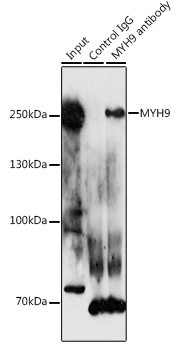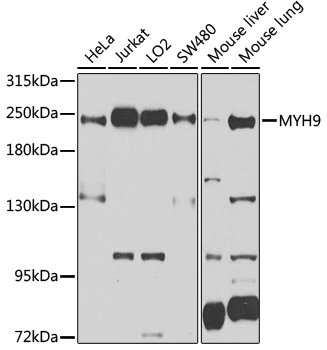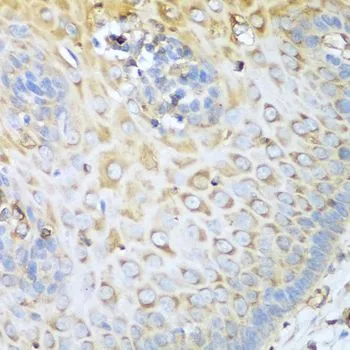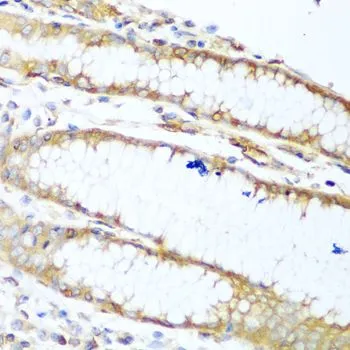
IP analysis of HeLa cell lysate using GTX55718 MYH9 antibody. Antibody amount : 3microg / 300microg lysate Dilution : 1:1000
MYH9 antibody
GTX55718
ApplicationsImmunoPrecipitation, Western Blot, ImmunoHistoChemistry, ImmunoHistoChemistry Paraffin
Product group Antibodies
TargetMYH9
Overview
- SupplierGeneTex
- Product NameMYH9 antibody
- Delivery Days Customer9
- Application Supplier NoteWB: 1:1000 - 1:2000. IHC-P: 1:50 - 1:100. IP: 1:50 - 1:200. *Optimal dilutions/concentrations should be determined by the researcher.Not tested in other applications.
- ApplicationsImmunoPrecipitation, Western Blot, ImmunoHistoChemistry, ImmunoHistoChemistry Paraffin
- CertificationResearch Use Only
- ClonalityPolyclonal
- ConjugateUnconjugated
- Gene ID4627
- Target nameMYH9
- Target descriptionmyosin heavy chain 9
- Target synonymsBDPLT6, DFNA17, EPSTS, FTNS, MATINS, MHA, NMHC-II-A, NMMHC-IIA, NMMHCA, myosin-9, cellular myosin heavy chain, type A, myosin, heavy chain 9, non-muscle, non-muscle myosin heavy chain 9, non-muscle myosin heavy chain A, non-muscle myosin heavy chain IIa, non-muscle myosin heavy polypeptide 9, nonmuscle myosin IIA2, nonmuscle myosin heavy chain II-A
- HostRabbit
- IsotypeIgG
- Protein IDP35579
- Protein NameMyosin-9
- Scientific DescriptionThis gene encodes a conventional non-muscle myosin; this protein should not be confused with the unconventional myosin-9a or 9b (MYO9A or MYO9B). The encoded protein is a myosin IIA heavy chain that contains an IQ domain and a myosin head-like domain which is involved in several important functions, including cytokinesis, cell motility and maintenance of cell shape. Defects in this gene have been associated with non-syndromic sensorineural deafness autosomal dominant type 17, Epstein syndrome, Alport syndrome with macrothrombocytopenia, Sebastian syndrome, Fechtner syndrome and macrothrombocytopenia with progressive sensorineural deafness. [provided by RefSeq, Dec 2011]
- Storage Instruction-20°C or -80°C,2°C to 8°C
- UNSPSC12352203





